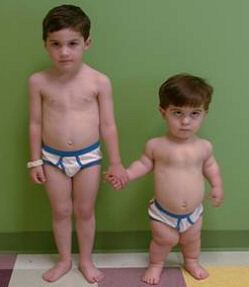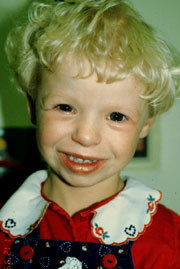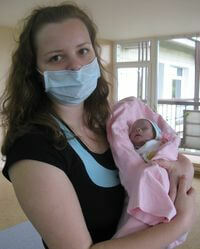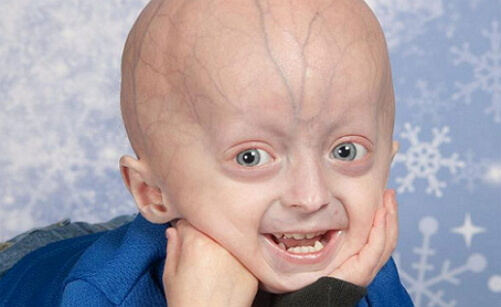Achondroplasia
 Achondroplasia is a genetic disease with a disruption in the growth of bone tissue. This pathology becomes evident from the very birth. In addition, achondroplasia refers to ancient congenital defects and is characterized by disproportionate forms of the body.
Achondroplasia is a genetic disease with a disruption in the growth of bone tissue. This pathology becomes evident from the very birth. In addition, achondroplasia refers to ancient congenital defects and is characterized by disproportionate forms of the body.
People with achondroplasia have spine deformities, short limbs with almost normal torso size and relative macrocephaly. This disease occurs approximately 1: 25,000 and it is equally exposed to both the male and female sex.
The term "achondroplasia" means "without cartilage," but patients with this diagnosis have a cartilaginous tissue. As a rule, in the prenatal period, and then in childhood, the cartilaginous tissue gradually becomes bony( except for the ears and nose).And in people with this anomaly this process is violated, affecting in the greater degree the bones of the shoulder girdle and thigh. Therefore, because of the slow division of cells of the cartilaginous tissue, the tubular bones become shorter, and growth stops.
Achondroplasia causes
The basis of this pathology is a gene that is localized only on one chromosome of the fourth pair and is subjected to anomalies.
Achondroplasia in some cases is inherited only from one of two parents who have this disease. In this case, there is a 50% probability of the child's inheritance of achondroplasia in the presence of only one parent. If the mother and father have such a pathology in the genes, then their future child will be able to inherit achondroplasia with a probability of 25%, and with the remaining 25%, the disease will be transmitted one gene with an anomaly from both parents. Such a child is marked by severe pathologies in the skeleton, which lead to premature death. But a child who does not inherit such a gene can completely get rid of achondroplasia and even have the chance not to pass it on to future generations.
Unfortunately, pathological changes in 80% of cases are not hereditary pathologies, but appear with new mutations that are formed in the ovules and spermatozoa involved in the formation of embryos. Parents who have children with achondroplasia as a result of such mutations, usually of normal growth, and do not have other children with such a disease. Therefore, the probability of future birth in children with achondroplasia is reduced to a minimum. Geneticists have already proved that fathers after 40 years are more likely to pass on this pathology to their children, as well as other diseases of autosomal dominant origin that result from these mutations.
Achondroplasia symptoms
Achondroplasia is characterized by dwarfism and irregularities in proportional body sizes, which are manifested by a discrepancy between the limbs and the size of the trunk, the head. In this case, there are no other defects in physique and intelligence.
If the size of the head and trunk in patients with achondroplasia is relatively normal, then the limbs are significantly shortened. The index and middle fingers of the hands are slightly separated from one another, so the hands resemble a trident. In addition, the length of the fingers, different from the norm, gives the hands a square look. The lower extremities have a certain curvature, and the feet are wide enough and short.
In patients with achondroplasia, the forehead protrudes significantly forward, and the back of the nose has a flat surface. Sometimes with large head sizes, such patients develop hydrocephalus, for which surgical intervention is necessary.
Achondroplasia has a very strong effect on the development of the child. In such children, the kyphosis of the upper spine, associated with poor muscle tone, becomes a frequent symptom of the disease. But after the child begins to walk, the kyphosis will gradually disappear. It is at this moment that the most important thing is to learn how to maintain the back of the child in such a way as to prevent the appearance of the hump in the future.
Then lordosis develops in the lumbar region in the form of a bend. As a result of all these symptoms: a large head, short extremities, poor muscle tone and rather weak joints, children with achondroplasia have a delay in the processes of getting up, sitting and walking themselves. But, despite such lag in motor skills, their mental development is absolutely normal.
But the congenital pathology of narrowed nasal passages provokes the development of frequent infectious ENT diseases, which can cause deafness. The small size of the jaw develops an incorrect bite of the teeth.
Very frequent clinical signs of achondroplasia in adolescents and adults are complaints of pain in the lumbar region and legs. This can be caused by partial pressure from the spinal canal to the entire spinal cord. And this, in turn, can provoke paralysis of the legs.
Sometimes, newborns with achondroplasia suffer a fatal outcome during sleep. Doctors suppose that the cause of death is the compressed spinal cord in the upper part, which prevents the full functioning of the respiratory organs. And all this is connected with the anatomical dimensions of the base of the skull and cervical vertebrae, in which the spinal cord is located.
Achondroplasia treatment
For normal development of the skeleton, patients with achondroplasia are prescribed hormone therapy, since no other methods of treating this pathology have been found for today.
Hormones can compensate for a little the growth deficit and, at least somehow, contribute to this process. From the research of scientists it is known that the growth of children increased significantly after taking these drugs and even reached normal figures. But no one knows if this treatment of achondroplasia will be effective for adults. Therefore, the surgical operation remains the main treatment for achondroplasia, in which the bones of both upper and lower extremities are lengthened. This method requires a very long treatment, which can be accompanied by complications. In addition, such surgical operations should be carried out in specialized clinics and specialists who have experience in this field of traumatology.
In the treatment of children with achondroplasia, doctors use tables that control the size of the head and the growth of the child's body. With a strong increase in the volume of the head, hydrocephalus can be diagnosed. And if at the diagnosis the diagnosis is confirmed, the neurosurgeon conducts the shunting to remove excess fluid, to relieve pressure on the brain.
Also, surgical intervention is used to eliminate kyphosis and curvature of the lower limbs. But in order to prevent the appearance of deafness, which can occur after the transferred infectious diseases, put drainage in the middle ear area with the help of a catheter. Dental defects are solved by placing orthodontic plates on the teeth.
Since many patients with achondroplasia are prone to fullness, and this aggravates skeletal problems, the important point is the correct balanced diet.
Thus, it can be concluded that so far there are no specific methods that could be cured of achondroplasia, however, genetic scientists work on this issue and, perhaps, they will appear in the near future.



